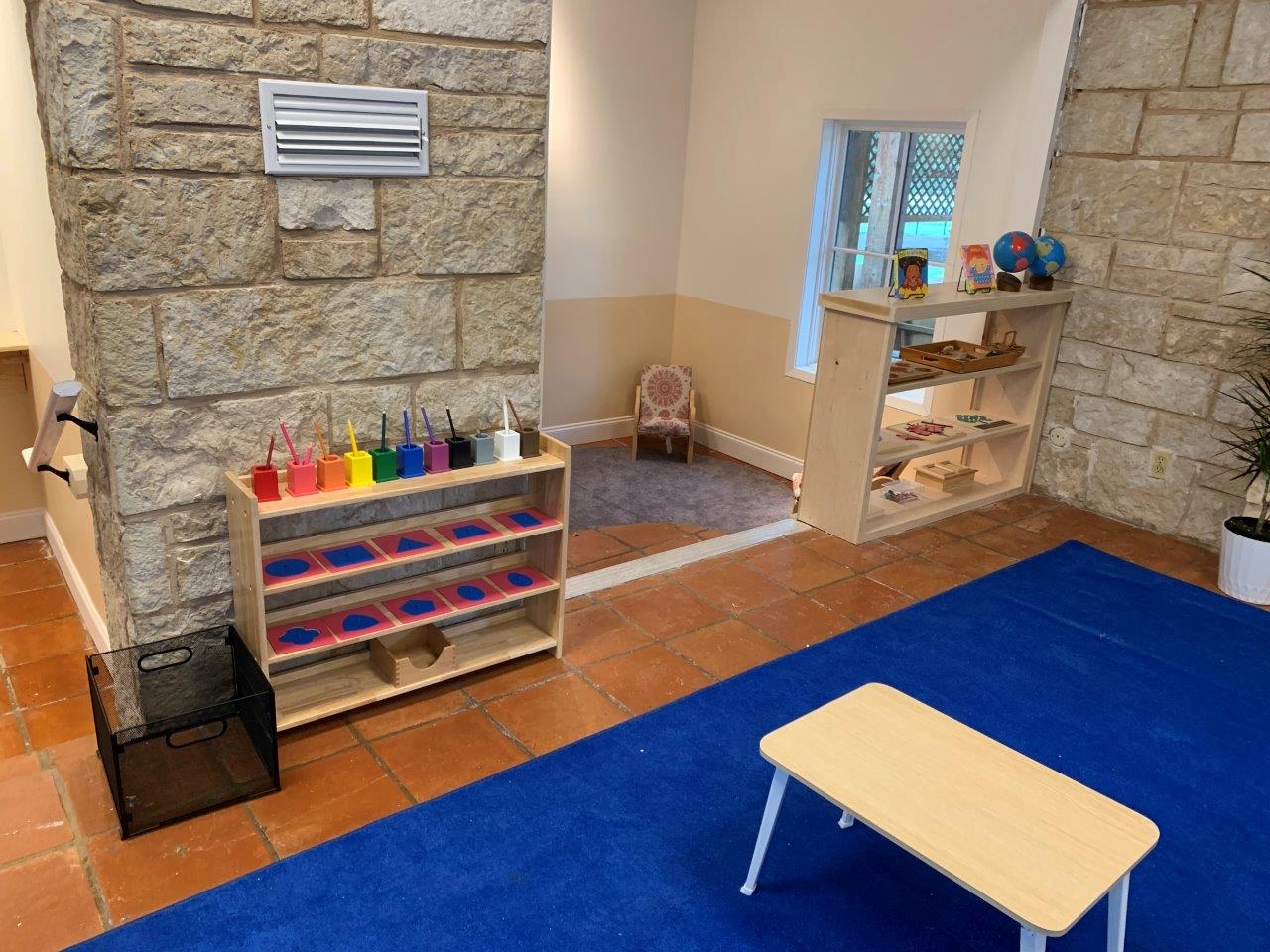
In May of 2020, MSOSV returned from the 2-month shutdown, the children had been at home. Parents transitioned from the office to work at home. The stress on families, not knowing when our lives would be safe again. This was the world we all had to get used to.
Our classroom cohorts had small groups of children who had the opportunity to be only with their cohort and the staff that worked in that classroom community. Our leadership team visited the campus only when necessary.
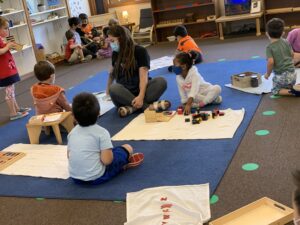 Children interacted with very few people.
Children interacted with very few people.
It took a bit of time to get used to being approached by children when entering a classroom. Suddenly I was being bombarded with questions, information and more. See, in the Montessori classroom, the children are typically busy bees, very engaged and working in their community. Normally, the children would not pay attention to my presence in the classroom.
The pandemic changed this.
Children were starving for interaction, with people other than their immediate family and classroom cohorts. It was interesting, to say the least.
Why bring this up?
The school year has begun, MSOSV is about as normal as it can be at this time. There are more children in the school and children are back to interacting with others outside of the family and school again. Mr. Andy is back with Bucket Drumming and my son Mik is the Soccer Shots coach.
We cannot wait to have our In-Person Art Studio Opening! The children will be excited to invite you into the classroom community and show off their work.
In our Montessori lingo, we would say that our classroom communities are once again, “normalized”. The children are fully engaged in their classroom. As I visit and observe in the classroom environments today, I am once again ignored by the children. This is a great sign. They are busy, busy at work. Dr. Montessori called the child’s play – their work.
The Montessori philosophy has stood the test of time. For over 100 years we have not deviated from the method and continue to follow the lead of Dr. Montessori through her writings, those she taught, and those who taught us.
Please stay tuned for upcoming Parent Education Sessions that will be held on Zoom. Along with our Montessori Leadership Team, you will also hear from some of our Montessori Guides and we are all excited to share the wonderful philosophy and education we provide to your children each day.
Primary Guides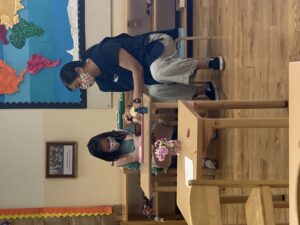
Each of our Primary Guides not only have child development classes and degrees, they have formal education in the Montessori method and philosophy. This means they have completed the equivalent of one to two years of full-time college education specific to Montessori and children ages 3 to 6 years.
Primary mixed ages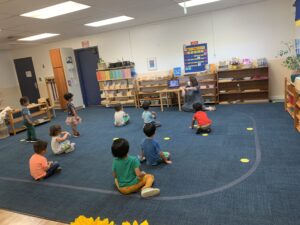
The second indicator of a fully implemented Montessori classroom is the use of multi-age classrooms. Nido and Pre Primary may be together or separate, with a Pre Primary classroom children range between 18 months to three years. Primary classrooms are for children ages 3-6, with preschool and kindergarten-aged children together.
The morning work cycle – 2.5 to 3 hours
A Montessori Work Cycle is an uninterrupted block of time. During this time, the children can explore the prepared environment and engage with materials of their own choosing. The time is meant to give them opportunities to enjoy the work they love, while also cultivating basic life skills.
A work cycle simply, consists of selecting an activity, doing it, achieving some internal satisfaction for the work, then selecting the next task. During the work cycle, younger children might move through 10 to 20 different activities. As children approach Kindergarten, the activities have many more steps and one activity might take up most of the work period.
How long should the work period last?
Pre Primary – 1 to 2 hours each day
Primary – 2.5 to 3 hours each day
Full complement of Montessori materials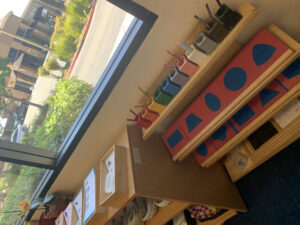
A sign of Montessori education is its hands-on approach to learning. Children work with specially designed materials, manipulating and investigating until they master the lesson inside.
Beautifully crafted and begging to be touched, Montessori’s distinctive learning materials are displayed on open, easily accessible shelves. They are arranged (left to right, as we read in Western languages) in order of their sequence in the curriculum, from the simplest to the most complex.
Each material teaches a single skill or concept at a time—for example, the various “dressing frames” help toddlers learn to button, zip, and tie; 3-dimensional grammar symbols help Kinder students analyze sentence structure and style.
And, built into many of the materials is a mechanism (“control of error”) for providing the student with some way of assessing their progress and correcting their mistakes, independent of the guide. The concrete materials provide passages to abstraction, and introduce concepts that become increasingly complex.
As the children progress, the guide replaces some materials with others, ensuring that the level of challenge continues to meet their needs.
Our Goals for the Children:
7 Traits of an Authentic Montessori School
Work is the Child’s Play: Following a New Child – Tori, who is Three Years Old